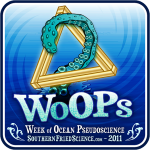Welcome to volume #3 of Dear Shark Man, an advice column inspired by a ridiculous e-mail I received. You can send your questions to me via twitter (@WhySharksMatter) or e-mail (WhySharksMatter at gmail).
Dear Shark Man,
Since it’s #GivingTuesday, what are some shark conservation charities you recommend?
Sincerely,
Generous in Georgia
Read More “#GivingTuesday, freshwater sharks, and hammerhead schooling: Dear Shark Man, Volume 3” »




